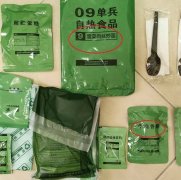The story of the origin of the yew, what is the anticancer substance of the yew and how to breed and cultivate it?
Taxus is a relic plant, which means remnant, which refers to creatures that have existed since ancient times, but there are still remaining populations today. The fossil record of the yew can be extrapolated to the Jurassic period 200 million years ago, which was distributed in Eurasia at the same time as dinosaurs.

The island was formed 5 million years ago, and during the ice age about 1.1 million years ago, China's southern yew (Taxus mairei) moved south from the icy mainland to warmer Taiwan by seed transmission. At that time, due to the drop in sea level during the Ice Age, Taiwan was connected to the mainland, so it was possible to take refuge in Taiwan. But when the earth warms up, glaciers melt and sea levels rise, the yew that takes refuge in Taiwan settles in the high mountains of Taiwan and begins to differentiate. It still belongs to the same species as the southern yew in China, but the DNA is slightly different.
The yew growing in Taiwan was first called Taxus mairei. Later in Taiwan Flora, the yew distributed from Nanyang Peninsula to South China, Taiwan and the Philippines was called Taxus mairei (T. Sumatra). Then taxonomists named this species as Xizang yew (T. Taxus chinensis var. mairei, whose scientific name is T. Gorgeous yew. However, recent studies from chloroplast DNA and nuclear DNA show that it should be based on the scientific name of Taxus mairei (T. Taxus mairei is more correct.
Paclitaxel was first found in the bark of Taxus mairei in the United States and was approved for the treatment of ovarian cancer in 1992. Paclitaxel combines with human albumin to form a new anticancer drug, which can make paclitaxel enter the tumor more easily and can treat metastatic breast cancer, non-small cell lung adenocarcinoma and metastatic pancreatic cancer. The new drug synthesized by 10-DAB in 2010 was also approved by for the treatment of metastatic prostate cancer. The demand for paclitaxel raw materials is increasing, and the global demand is estimated to be about 3000 kg. Taiwan's biotech industry is not absent in the production of anticancer APIs. Pacific paclitaxel and docetaxel made in Taiwan account for 21% and 38% of the world's APIs, respectively, but all raw materials are imported.
Breeding and cultivation
Can Taxus mairei be used as a source of taxol or 10-DAB? In 1993, natural mother trees of Taxus mairei scattered in high mountains were collected and preserved by means of asexual propagation such as cutting, grafting, tissue culture and so on. It is estimated that the age of these natural mother trees has reached hundreds to thousands of years, and the seedlings propagated asexually retain the physiological age of the original mother trees and grow slowly. However, through continuous grafting on seed seedlings and tissue culture, these seedlings can be rejuvenated and young again.
In addition, seeds were collected from various mountainous areas of Taiwan to cultivate seed seedlings, and 10 dominant seedlings with good growth were selected to establish cultivation areas with original mother tree clones in Wulai, Nantou, Kaohsiung and Taitong. the growth of these varieties and the stability of paclitaxel content were monitored for a long time, and three strains were selected, named Yew Taihong No. 1 No. 2 and No. 3 respectively. These three varieties have established ear-picking orchards, which can produce tens of thousands of cuttings every year and propagate a large number of cuttings. one. Cuttings with a height of about 25 centimeters in five years can be planted on a farm to be cultivated in a tea garden. Three years later, the height of the seedlings is about 1 meter, and the branches with a height of more than 50 centimeters are harvested by a tea picker.
At present, Taihong 1 has the largest cultivation area and produces twice as much taxol as Taxus mairei, so it has established an industry to produce taxol by cultivating Taxus mairei in Taiwan. Due to the limitation of the cultivated area in the mountains of Taiwan, it is impossible to cultivate a large area like the medium-sized continental countries in Europe, America and India. At the same time, in response to the increasingly frequent extreme weather in Taiwan, such as typhoons, torrential rains, and droughts, the mixed agroforestry system is developed, that is, the yew is cultivated under the forest. After 10 years of cultivation, after more than 10 typhoons, including 88 floods, abnormal drought, branches and leaves and paclitaxel can maintain stable production.
- Prev

There are new changes in the fishing moratorium policy in 2019, and there will be incentives for the protection and recovery of marine resources during the fishing moratorium.
In order to encourage fishermen to suspend fishing in Hong Kong within a certain period of time, the Fisheries Department originally laid down the "key points for the implementation of voluntary fishing moratorium", and recently announced the "voluntary fishing moratorium incentive scheme" in accordance with item 2 of Article 59 of the Fisheries Law. among them, the reward for each sampan and fishing raft
- Next

The online store PLA pork rations are sold online, but there is no record of imports from China tracked down by the Customs Department.
Some people on Facebook shared the "experience and pictures of the PLA's war readiness grain package test", as well as the selling page of online e-commerce, at a sensitive time for comprehensive prevention of African classical swine fever. The Customs Department of the Ministry of Finance immediately traced the source of rations, which was shared after being verified by the Prevention and Inspection Bureau.
Related
- A course of planting techniques and methods on how to grow carrots
- How to plant the latest tulips?
- Is it better to pick tea in the morning or in the afternoon? When is the best time for tea to be picked? what is the third or fifth tea?
- Launch Yuanxiao Happy combination Haocha + Tea Yuan healthy Taste
- Penghu Tourism "Fireworks 20 Parade with You"
- 2022 West Lake Happiness holds "Digital Revitalization Voucher" and draws iphone13 and laptop.
- Banqiao Fuzhou social houses are designed to change start-up combined with police elimination to create a safe and livable environment
- The convenient measure of "mechanical weeding" in Xinbei has been abused and the Agriculture Bureau has imposed heavy penalties on the illegal land consolidation.
- Changgeng University Joins Hands with Four Memory Factories to Rescue Memory Talent Shortage
- The list of Taiwan's top 100 MVP managers is listed by the Director-General of the Farmers' Association of Sanxia District.

